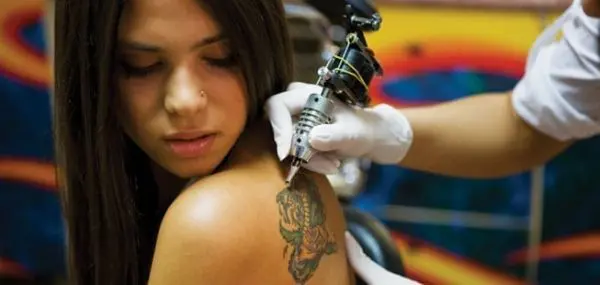Piercings gone bad. Earbuds and hearing loss. Snoring. Strep. The common cold. This Q&A with Dr. Todd Otteson, Division Chief of Pediatric Otolaryngology at University Hospitals Rainbow Babies & Children’s Hospital, answers our ear-nose-throat-related questions.
Q: Our adolescents love their ear-buds and noise-canceling headphones. How much should we worry?
Otteson: There’s a risk of noise-induced hearing loss, and even permanent damage. Also, if your ear-buds are in and you’re engaged in some other activity, you’re not as aware of your surroundings. You might not hear the biker that wants to pass you when you’re jogging. Or the car.
Q: Should parents insist their teenagers lower the volume?
Otteson: Yes. So, normal conversation is 60 decibels. We worry when sound is above 85 decibels. A sound above 85 decibels for eight hours can cause a hearing loss. And understand that the measuring of decibels is logarithmic, which means if a sound goes up by three decibels, it doubles in intensity. So, 88 decibels causes hearing loss after four hours and 100 decibels after just 15 minutes. The highest decibels on the iPod is 105, which can cause hearing loss after 5-10 minutes. The general rule is 60-60—no more than 60 minutes of listening at 60 percent of the volume. If you can hear your teenager’s music through their headphones, it’s too loud.
Q: What about live music?
Otteson: A really loud concert can be up to 110 decibels. That’s not continuous, of course, given the breaks between songs. But, some doctors would recommend using earplugs, though adolescents may not want to hear that.
Q: Does the hearing loss show up later in life—or are teenagers experiencing hearing loss?
Otteson: It can happen during adolescence. The hearing loss starts to present at the higher frequencies and then chips away until it gets into the usual hearing test range, which can affect the day-to-day hearing. Hearing loss in teens can be a problem.
Q: Tonsils can still be an issue during adolescence, right?
Otteson: Yes. We usually remove tonsils in younger kids—up until about six-years-old—for sleep apnea. Between six and eight, the indication is equally for sleep apnea and tonsillitis infections. After eight, it’s for tonsillitis infections, including strep.
Q: Why do some teenagers seem to get strep over and over?
Otteson: Some teenagers are just more prone. We have parents who go through the gamut, making sure their adolescents are washing hands and changing toothbrushes, but they still get it. It can be a tough problem, and you miss a lot of school days. We consider tonsillectomy based on how many infections the patient has had.
Q: Do some teenagers experience sleep apnea, too?
Otteson: Yes, but it’s not as common as in children. Teenagers sometimes don’t have the best “sleep hygiene.” They stay up late doing homework and get up early the next morning for class. But snoring and pauses in breathing when they sleep are red flags for sleep apnea. You can send them for a sleep study to make a definitive diagnosis.
Q: Let’s talk about ears, like using a Q-tip to clean them.
Otteson: It’s tempting, but you should avoid that. An outer cleaning with a Q-tip is fine, but the ear canal cleans itself.
Q: Even if there’s a lot of wax?
Otteson: The amount of wax production varies between people, but in general, wax serves an antibacterial purpose. But if it’s causing pain or hearing problems because it is lodged in there, we recommend you see a doctor to clean it out safely. I have had some adolescent patients who presented with a ruptured eardrum from a Q-tip.
Q: Teenagers love piercings, but what about ear cartilage infections?
Otteson: It’s a problem because the infected cartilage can cause significant swelling, and over the long term, the scarred cartilage gets very thick. Typically, we remove the piercing, drain any abscesses, and leave the piercing out for at least six months. Usually, the teenager will need oral antibiotics and, in the rare case, IV antibiotics to fight the Pseudomonas bacteria which is the most common bacterium in this type of infection. Cartilage piercings are more prone to infection and more difficult to heal because the cartilage isn’t so vascular. There’s less blood flow to those areas to deliver the antibiotics, so the infections can linger.
Q: What’s the best way to treat the common cold?
Otteson: There are no hard and fast rules, but I’d target the symptom. If it’s nasal congestion and drainage, try guaifenesin to break up the mucus. If it’s hard to breathe at night or there’s drainage during the day, try oxymetazoline nasal spray for a couple of days. That can help shrink the tissues in the nose and open the nasal airway for better breathing. If the cold goes beyond 10 days or your teenager develops a fever or worsening symptoms after initial improvement, that’s grounds to be evaluated for antibiotics.
Q: Can a Neti pot help?
Otteson: Yes, at least in trying to avoid an antibiotic. It flushes things out and helps clear away the mucus. Especially in patients that are prone to nasal issues, I absolutely think it can be helpful.
Q: What else do you see teenagers for most commonly?
Otteson: Nodules on the vocal cords, which can cause a raspy or hoarse voice. I begin by asking about their degree of voice use. What activities are they engaged in at school? Are they on the cheerleading squad? Or a singer? Then, we pinpoint how it started—as an upper respiratory infection, for example. Acid reflux can also contribute to voice issues. We pass a flexible scope down the nose to look at the voice box to help with the diagnoses, and if we see a nodule, we often treat it with voice therapy or medication if we see evidence of acid reflux.
Another issue with adolescents is a mass in the neck.
Q: Is that as worrisome as it sounds?
Otteson: The vast majority of the time, it’s nothing to worry about. It’s usually a reactive lymph node that’s filtering a lingering infection. My level of suspicion depends on the location and size of the mass. If it’s just above the clavicles, I worry more than if it’s in the neck. If it’s large and it stays large, I worry about that. If it’s tender and painful, I worry about that. If any of these symptoms are present, we may need to investigate further for lymphoma with a CAT scan or needle aspiration biopsy.
Q: What should a parent do if a teenager comes to them with a neck mass?
Otteson: Stop in with your pediatrician first. Again, a sinus or tonsil infection are the biggest culprits for lymph node swelling, which you can treat with antibiotics. I think of all the kids I’ve seen since I started practice, I only had one that ended up with a positive needle biopsy. So, don’t panic.




